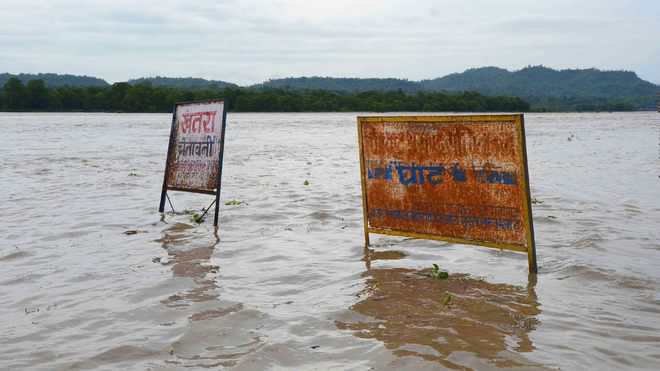
The study looked at the difference between global warming of 1.5 degree Celsius and 2 degree Celsius (compared to pre-industrial levels). Tribune file photo
London, April 2
Examining how climate change could raise food insecurity risk across the world, researchers have projected that the Ganges river could more than twice its current flow at 2 degrees Celsius global warming, with floods putting food production at risk in countries like India.
"Climate change is expected to lead to more extremes of both heavy rainfall and drought, with different effects in different parts of the world," said study co-author Richard Betts, Professor at the University of Exeter in Britain.
"Such weather extremes can increase vulnerability to food insecurity," Betts added.
The study looked at the difference between global warming of 1.5 degree Celsius and 2 degree Celsius (compared to pre-industrial levels).
The findings, published in the journal Philosophical Transactions of the Royal Society A, showed that despite increased vulnerability to food insecurity in both scenarios—the effects would be worse for most countries at 2 degrees Celsius.
"Some change is already unavoidable, but if global warming is limited to 1.5 degree Celsius, this vulnerability is projected to remain lower than at 2 degrees Celsius in approximately 76 per cent of developing countries," Betts added.
Using a new global model based on patterns of sea-surface temperatures and sea ice, the researchers looked at 122 developing and least-developed countries, mostly in Asia, Africa and South America.
The researchers examined projected changes in weather extremes and their implications for freshwater availability and vulnerability to food insecurity.
They found that warming was expected to lead to wetter conditions on average—with floods putting food production at risk—but agriculture could also be harmed by more frequent and prolonged droughts in some areas.
Wetter conditions were expected to have the biggest impact in South and East Asia and the areas worst affected by droughts were expected to be southern Africa and South America—where flows in the Amazon are projected to decline by up to 25 per cent, the findings showed. IANS



























